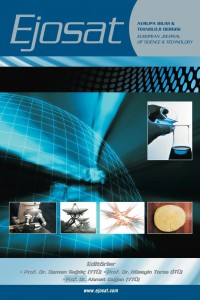Abstract
In this study the design of solid-fuel low-altitude rocket ALP-01 CAD has been optimized for the selected engine of rocket sizes for an altitude of 1500 meters. Parabolic type was preferred as the cone geometry. The length is calculated as 35cm. 3D printer for nose cone and shoulder section will be prepared by hand and made from glass fiber by hand method. Two different rescue mechanisms have been used in our rocket. CO2 tube discharge mechanism was used for the removal of the nose cone, payload, payload parachute and the first parachute from the rocket. Payload has a flight computer with a telemetry system. This computer instantly transmits location, altitude, temperature and humidity information to the ground station. There are GPS and telemetry systems in all parts of our rocket. The production of composite parts with cylindrical cross-section was performed and positive results were obtained in the composite workshop of the Mechanical Engineering Laboratory of Iskenderun Technical University. As a result of Openrocket simulations as a wing geometry, delta-type flaps were considered suitable. Furthermore, it is planned to participate in Teknofest 2019 rocket competition with ALP-01 solid fuel rocket which is planned to be designed and produced. Four times solid-fuel rocket engine trials, two of which were static tests, were conducted in the study stages. The fuel mixture used in the experiments (KNO3Sukroz / Dextrose) is located in the Mechanical Engineering Laboratory of Iskenderun Technical University.
Keywords
References
- Lee, R. G., (1998), Guided Weapons, Third Edition, Brassey’s, London.
- Nielsen, J.N., (1979) “Missile Aerodynamics – Past, Present, Future,” AIAA Paper 79-1818.
- Mcmahon, P. (1991) Aircraf Proulsion , School of enginering Bath University of Technology.
- Briggs, M.M., Systematic Tactical Missile Design, Tactical Missile Aerodynamics: General Topics, “AIAA Vol. 141 Progress in Astronautics and Aeronautics,” American Institute of Aeronautics, Reston, VA, 1992.
- Nielsen, J.N., (1960) Missile Aerodynamics, McGraw-Hill Book Company, New York, N.
- Department of Defence USA,Military Handbook(1990) "Desing of Aerodynamically Stabilized Unguided Missiles.".
Abstract
Keywords
References
- Lee, R. G., (1998), Guided Weapons, Third Edition, Brassey’s, London.
- Nielsen, J.N., (1979) “Missile Aerodynamics – Past, Present, Future,” AIAA Paper 79-1818.
- Mcmahon, P. (1991) Aircraf Proulsion , School of enginering Bath University of Technology.
- Briggs, M.M., Systematic Tactical Missile Design, Tactical Missile Aerodynamics: General Topics, “AIAA Vol. 141 Progress in Astronautics and Aeronautics,” American Institute of Aeronautics, Reston, VA, 1992.
- Nielsen, J.N., (1960) Missile Aerodynamics, McGraw-Hill Book Company, New York, N.
- Department of Defence USA,Military Handbook(1990) "Desing of Aerodynamically Stabilized Unguided Missiles.".
Details
| Primary Language | Turkish |
|---|---|
| Subjects | Engineering |
| Journal Section | Research Article |
| Authors | |
| Publication Date | March 31, 2019 |
| Published in Issue | Year 2019 Issue: 15 |

